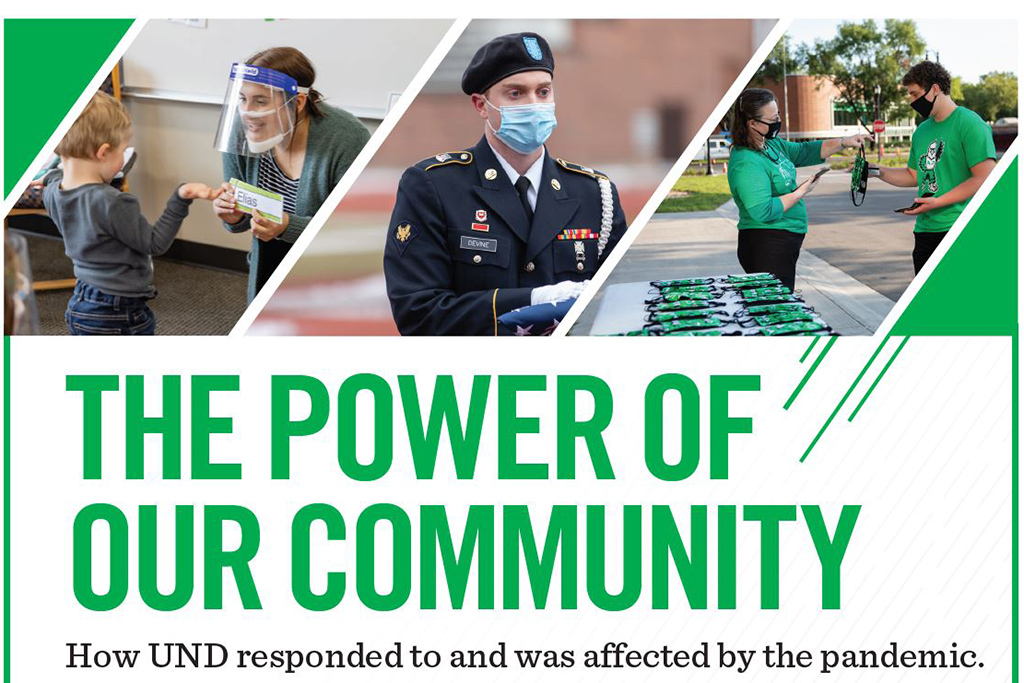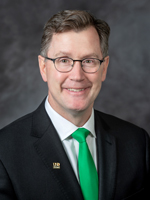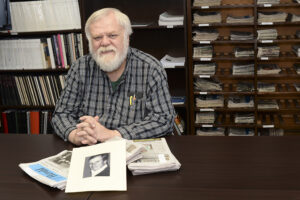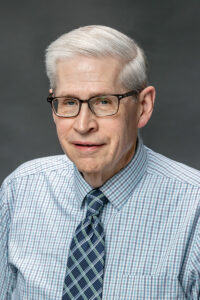A digital time capsule from the pandemic
UND will unveil its extensive COVID archive at free event in Empire Arts Center on Wednesday, March 8
As the saying goes, you can’t know where you’re going if you don’t know where you’ve been – emphasizing the importance of history and the learning of lessons through shared experience.
On Wednesday, March 8, at 4:30 p.m. in the Empire Arts Center in downtown Grand Forks, UND will unveil an archive of interviews and photos documenting the experiences of community leaders and the University’s students, faculty and staff during the COVID pandemic that began early in 2020.

“It is vitally important to capture and preserve the memories and thoughts of those who went through this experience,” said UND President Andrew Armacost, who commissioned the project in late 2021. “Through the archive, their perspective will serve as a valuable reference to future generations when faced with crises and unexpected challenges.”
“The Power of Our Community: How UND responded to and was affected by the pandemic” is free, and the public is invited. Speakers will include Armacost; UND communications instructor Chuck Haga, a columnist with the Grand Forks Herald and former writer for the Minneapolis Star Tribune; Sarah Heitkamp, UND art collections curator; and Zeineb Yousif, the digital initiatives librarian at Chester Fritz Library.
Central to the COVID archive project is a series of more than 50 video interviews by Haga, whom Armacost chose to lead the effort. Haga has taught writing at the University since 2014 and has a master’s degree in history from UND. He believed his interest in history and his experience as a journalist in conducting interviews would be useful to the project, and Armacost agreed.
Adjusting to COVID
“I wanted to do interviews with a broad cross section of the UND community: administrators who had played key roles; a variety of faculty members, especially those who had had to make significant adjustments to how they taught,” Haga explained.

“I wanted to encourage each participant to talk about how they were impacted by the pandemic,” he continued. “I was especially interested in whether they felt the university responded appropriately, what might have been done differently or sooner, lessons learned that might help UND deal with a future crisis, and whether they felt they had learned something about themselves.”
Among those Haga interviewed were music faculty; a wide variety of students (including from several majors, student athletes, and international students); some staff, such as carpenters and food service workers; and a half dozen university partners, including local health officials, the mayor of Grand Forks and the commander of Grand Forks Air Force Base.

“What interested me the most was how universally respondents talked about the importance of communication and transparency. And they tended to give the university good marks,” Haga said.
“I also enjoyed hearing students and faculty talk about how they were pleased with how they adapted to new situations and challenges, whether having to embrace new technology for teaching and learning, or going largely remote – or coming back to face-to-face instruction,” he added. “Students clearly missed rubbing elbows with other students and having the traditional college experience.”
Available to the public
A video highlighting a portion of Haga’s interviews will be shown during the event at the Empire Arts Center, followed by a reception and pandemic art exhibit in the center’s lobby.
“This isn’t a Ken Burns sort of documentary, something you’d get a big bowl of popcorn and sit down with for the more than seven hours of interviews,” Haga said. “We’ve chosen a sample of excerpts for the public presentation, a video of about 35 minutes. But the full collection will be archived, indexed and made accessible to the university community and the larger public.”
Yousif worked with Heitkamp to create a digital exhibit of highlights from the pandemic oral history project, as well as an online digital collection containing the interviews in full. The online exhibit is accompanied by digital display located in the MagicBox at the Chester Fritz Library.

Heitkamp introduced the idea of also sharing photographic images in a more traditional exhibition format. The exhibit features 25 photos capturing simple everyday moments throughout the pandemic. All photos – except for one – were taken by the UND Marketing & Communications photography team.
Photography’s power
“To me, they’re truly the University’s visual storytellers,” Heitkamp related. “It was kind of touching to reflect back on all of the moments that they captured while we were all doing our best to work, study, and live. That is the power of photography.
“I hope when the viewers see these images, they are also able to reflect back on how resilient our community was during that time period, and how we didn’t quit helping each other through each situation, every day,” she added.
Armacost commended Haga, Heitkamp and Yousif for their work in creating a record of UND’s pandemic experiences that will help future leaders make knowledgeable, well-informed decisions when confronted with an unanticipated major crisis, such as the COVID pandemic.



